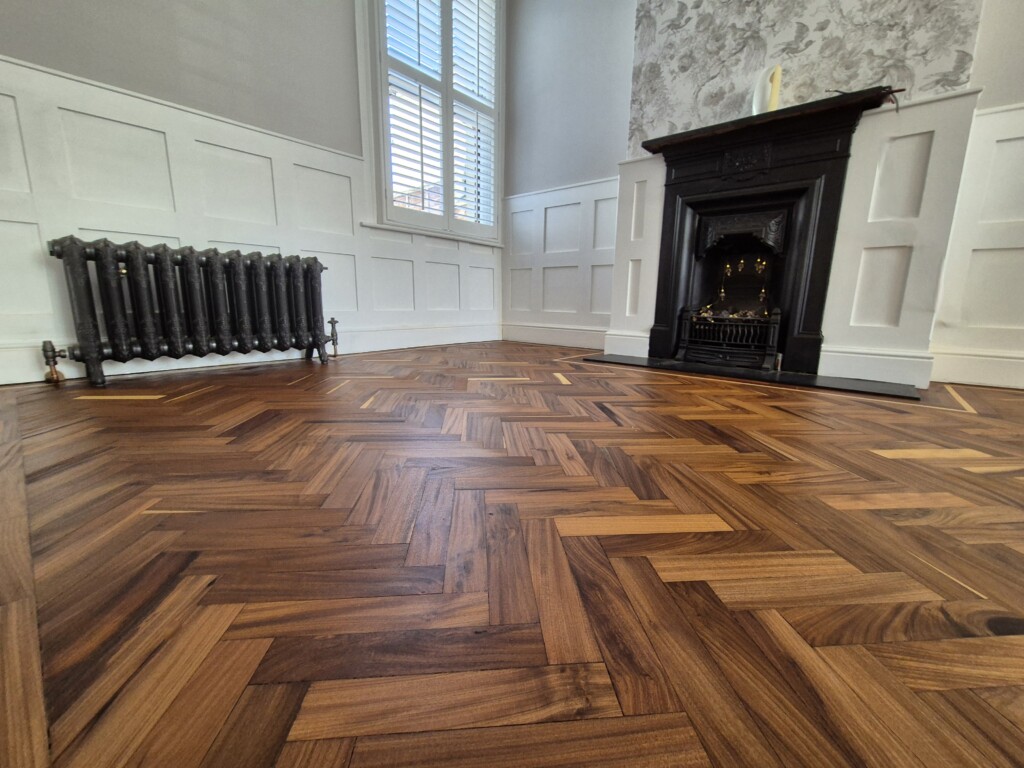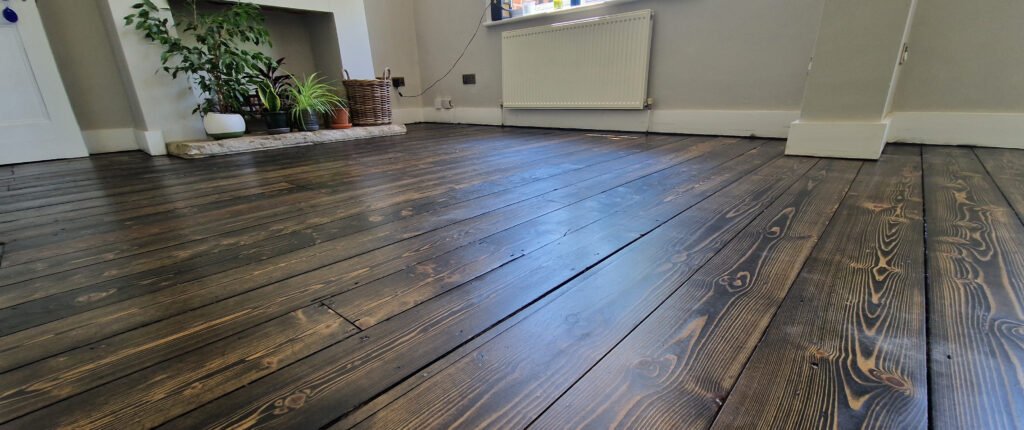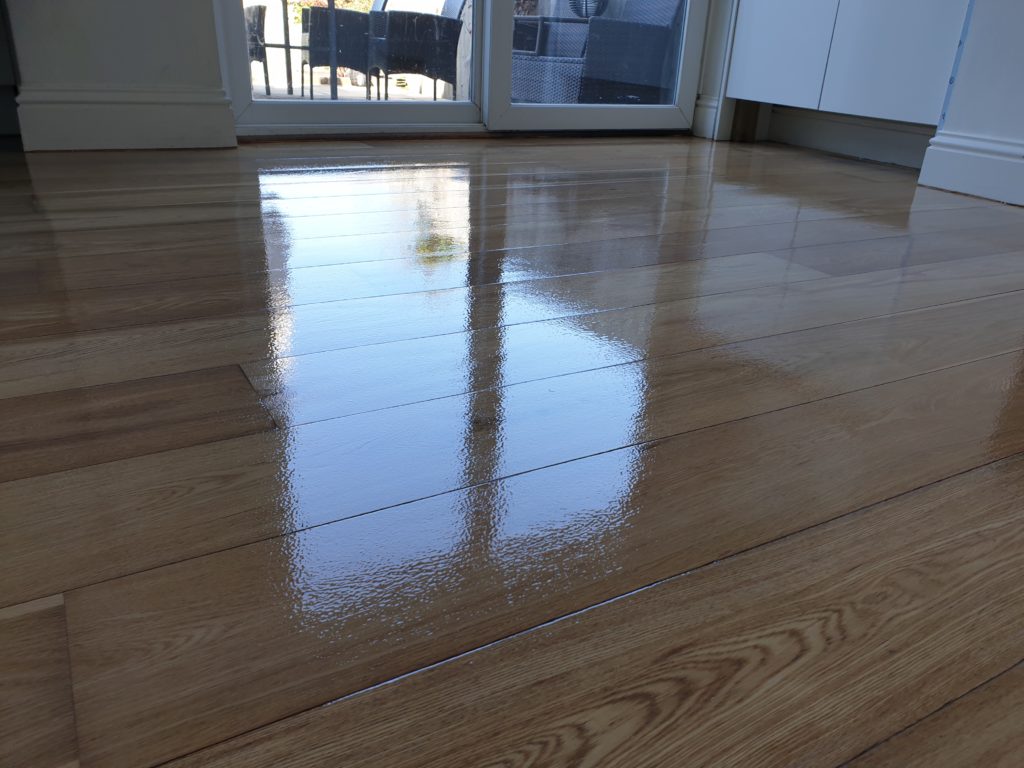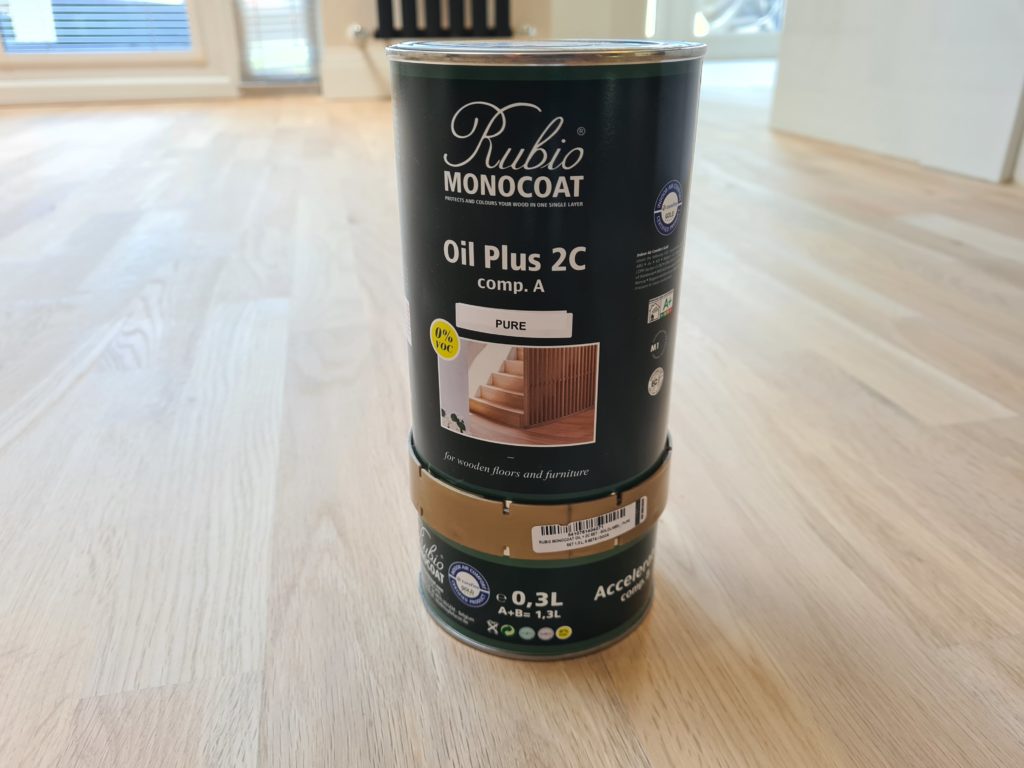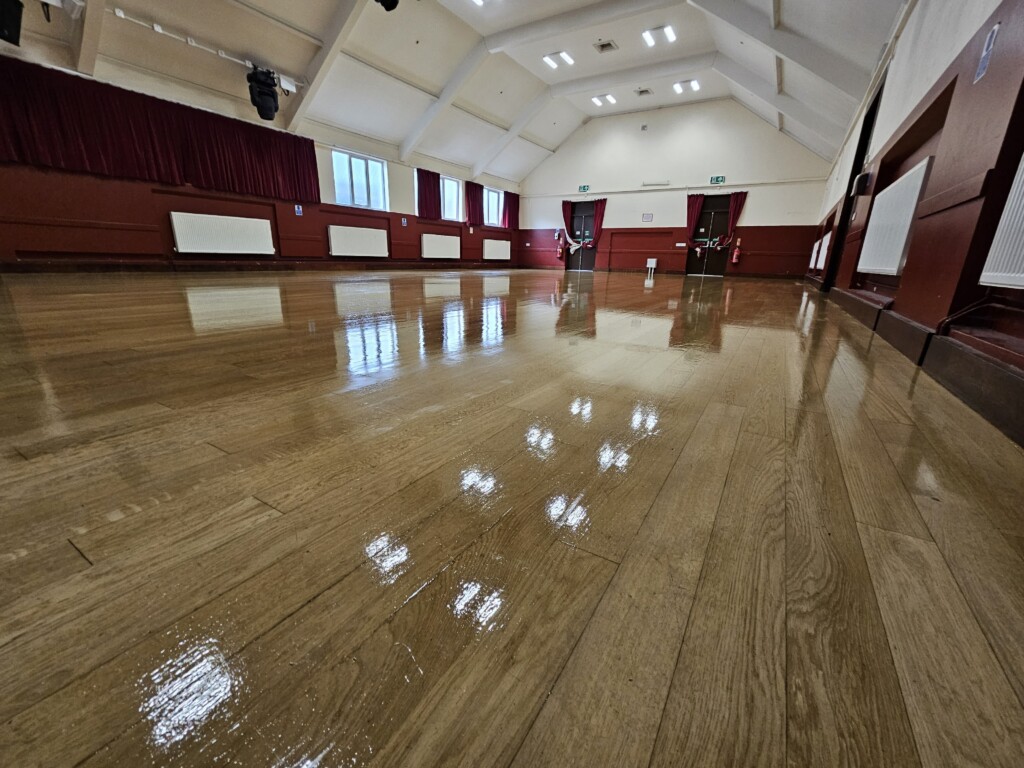Floor Sanding
A good majority of our floor restoration projects usually require a 36-40 grit abrasive, it may also be necessary to begin sanding at a 25-45 degree angle, depending on how flat the Floors are. In doing so it will help to level the floor and take out any cupping if present. The second step of the wooden floor restoration is to then sand the Floors with the grain. It’s important to use the same grade of abrasive for this as it will ensure all previous diagonal scratches are removed. After this we move on to a medium grade abrasive, say 50-60 grit, which for our money is one of the most crucial parts, as it is this step that will help transition the floor from rough to medium. Besides, this also helps to smooth out any marks left from the previous process. For the final part of the restoration process we use fine abrasives, usually 80-120 grit (depending on wood species). This leaves the surface of the wooden floor smooth to the touch and almost, ready for finishing.
Gap Filling
The first method we use takes fine sawdust from the actual floor. This is then mixed with Lecol or Blanchon epoxy resin to create a filler that will match your floor in colour.
Once our filler has the correct consistency, we spread over the entire surface. This will fill in all the gaps between boards along with any other cracks and blemishes.
Staining Services
Our staining services are completed using professional Light-fast stains Mylands & Morrells. There’s many colours to choose from, which can be viewed from our colour charts. We also use tinted oils by Rubio Monocoat.
The key to perfect Floor Staining mainly lies in the sanding process. The Floor Sanding has to be, as we say ‘Spot on’ as any minor imperfections will show indefinitely, meaning a full re-sand!
Floor Finishing
Polyurethane lacquer is our most frequently used product when carrying out Floor Finishing. Polyurethane has low Volatile Organic Compounds, Low odour and best of all it’s Water-based, meaning it doesn’t take days to dry as found with older varnishes. A fantastic product to use on all floor types and available in a wide variety of sheen’s such as; Invisible, Ultra Matt, Matt, Satin and Gloss. Our preferred products are by far Bona & Loba.
As standard our Floor Finishing consists of 3 good coats of Lacquer. On Commercial Floors we apply 1 base coat, followed by 2 coats of 2-part, commercial grade Lacquer. Bona Traffic Hd and Loba Fusion get our vote!
Oil Finishes
We also finish a fare share of our projects in Hardwax Oil, as we believe it is durable, forgiving on any scuffs or spillages and really brings out the natural beauty of timber.
For Oil finishes we highly recommend Treatex Ultra, Morrells & Rubio Monocoat. As standard we apply 2 coats of Treatex Ultra or Morells XLO and 1 coat of Rubio Monocoat penetrating Oil. Rubio only requires 1 coat as the product seeps deep into the pours of the timber, forming an excellent bond with the molecular structures. It effectively becomes part of the wood as apposed to a layer on top of the surface.
-Every project is completed with the finest professional finishes guaranteed!
Floor Maintenance
Ideally your floors require maintenance when they start to show signs of wear. This is usually found in high traffic areas. Acting sooner rather than later is strongly advised, as this can prevent any long term damage to the floors. Our most common maintenance carried out on floors is a screen & seal. The process involves cleaning, creating a key using a mesh screen and finally re-coating with Lacquer or Oil (after a thorough vacuuming of course).



